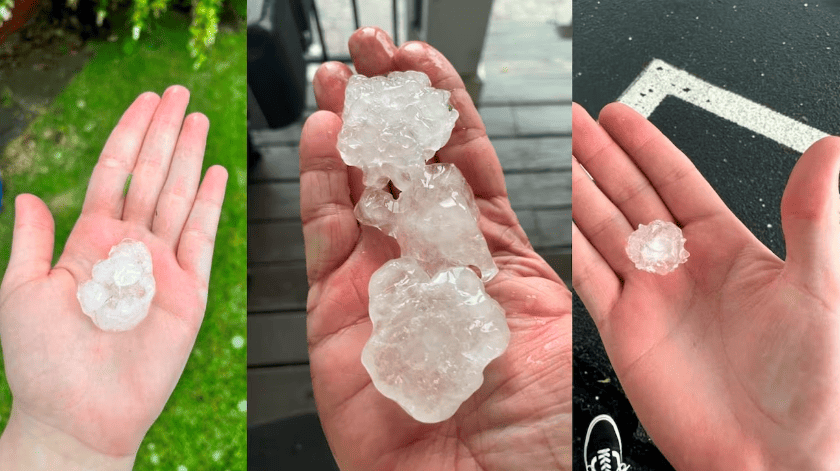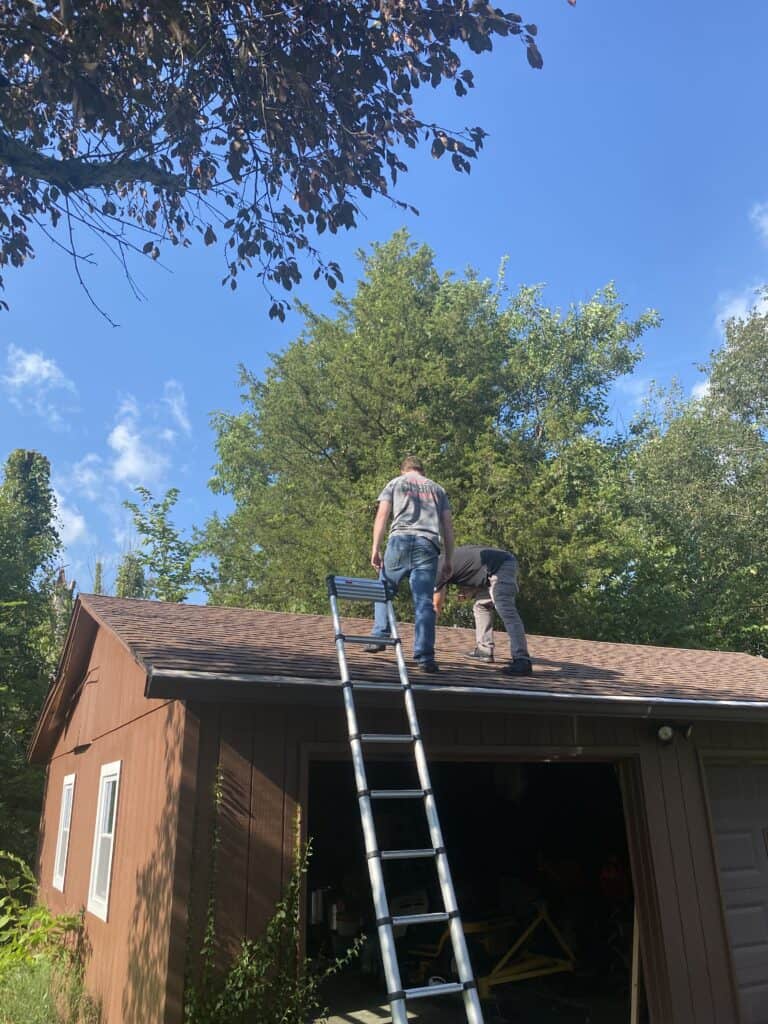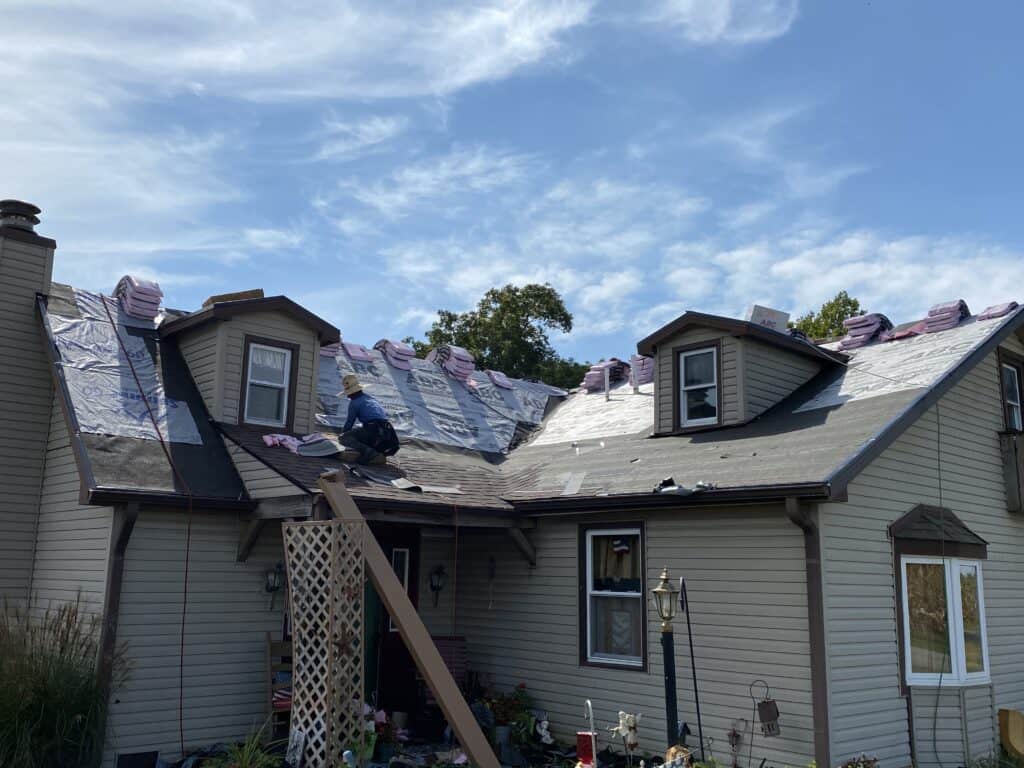
How Does a Storm Damage Roofing Claim Work
Most areas of the United States face the inevitable threat of severe storms at one type or another. In the Midwest, homeowners face a wide variety of weather challenges. The most common types of roof damage occur due to high winds, hail, or tornadoes. When Mother Nature gets rowdy, the unfortunate reality is that homeowners will likely have to file an insurance claim to cover the cost of repairs or replacement.
Only 11% of homeowners have filed a claim within the past 15 years, which means most people are not very familiar with how the process works. After almost 20 years, Indy Exterior Services has become an industry expert in both storm-damage roof restoration and insurance claims restoration.
Follow along as we walk you through what steps to take and what to expect when your roof is damaged by a storm:
Document the Damage:
- As soon as it is safe to do so, inspect your roof from the ground and document the damage. Take as many photographs as you can and make detailed notes including the date, duration of the storm, and the size of hail (if applicable). This will serve as crucial evidence during the claims process.
Contact Your Trusted Local Roofing Company:
- Research local roofing companies in your area by consulting Google or the BBB. Take time to read about their company and make sure they’ve been in business for a good length of time. Go over the reviews to see what other homeowners have to say about the company. It can also be helpful to talk with neighbors or friends who have recently had roofs replaced to see if they have any referrals or information on which contractors to avoid.

Reach Out To Your Insurance Company
- Notify your insurance company as soon as possible. Provide them with the necessary information, including the date and details of the storm and the extent of the damage. They will send an adjuster out to your home to assess the damage and do an inspection. It’s a good idea to be present for the inspection and if possible, have your chosen roofing contractor present as well.
- Unfortunately, adjusters will often try to side with the insurance company instead of you, the homeowner. This means they will downplay the damage or even claim that there is no damage at all, in order to avoid paying repair or replacement costs. It’s important to know your rights in situations like this. You can and should contact your insurance company and request a new adjuster. Remember – your claim is not “closed” until you are satisfied with the outcome of your claim.
Receive the Adjuster’s Estimate:
- The insurance adjuster will provide an estimate of the cost of repairs or replacement based on their assessment. This estimate will serve as the basis for your claim. It’s fairly common for the insurance adjuster’s estimate to be different from the contractor’s estimate. We’ll discuss that in more detail below.
Review Your Policy:
- Familiarize yourself with your insurance policy, including coverage limits, deductibles, and any exclusions. This will help you understand what costs will be covered and what you may be responsible for. You will only be responsible for the deductible and for an upgrades or maintenance items which should be discussed with your contractor during the restoration process.. If a roofing contractor offers to “cover your deductible,” RUN. Not only is this illegal, it is also a major red flag when selecting a contractor.
Get a Repair Estimate:
- Obtain an estimate from a reputable roofing contractor for the repair or replacement work. Provide the estimate to your insurance company as part of your claim. You have the right to choose your desired contractor. Despite what many insurance companies will try to make you think, you are not obligated to choose their suggested contractor or a cheaper contractor. And as with most things in life, the cheapest option is rarely the highest quality.
- Your contractor should be able to find and assess the damages and provide an accurate estimate utilizing Xactimate Estimating Software, which is recognized as the industry standard amongst restoration contractors and insurance companies.
- In the event that the contractor’s estimate is higher than the insurance company’s, it’s best to provide the contractor’s estimate to the insurance company, along with accurate documentation as to why the estimate is higher, missed line items, or missed damages. Photo documentation often helps in this instance.
- Prior to the start of the project, it’s best to obtain an agreed-upon scope of work and estimate. Keep in mind that sometimes hidden damages and costs are not apparent until after the project is underway. For example, there may be rotten plywood decking that requires replacement in order to be restored properly. It’s impossible for a contractor to know everything prior to getting fully into the job. This is another crucial part of the process to take photos or have your contractor take photos to provide to the insurance company as explanation of why additional materials, labor, and funds are needed for full recovery from loss.
Negotiate with the Insurance Company:
- If there are discrepancies between the insurance adjuster’s estimate and the contractor’s estimates, be prepared to negotiate with the insurance company. Provide any additional documentation or evidence to support your claim. This may require additional photos.
- If the insurance company tries to tell you that the claim has been closed, but your repairs are not completed or are not completed to your standards, inform them that you are not satisfied. The claim is not closed until you say it is.
Approval and Payment:
- Once the claim is approved, the insurance company will provide funds to cover the repair or replacement costs, minus any deductible. The payment may be issued in one or more installments.
- Oftentimes, the insurance company will come up short on what they believe you are owed for repairs or replacement. When this happens, keep in mind that they are obligated to restore your home to the way it was before the storm damage occurred. If your contractor’s estimate is higher, they may proceed with the work as planned. Once the work has been completed, the contractor will submit documented supplements and final photos to your insurance company to take care of the discrepancy.
Complete Repairs:
- Use the insurance funds to hire a licensed and reputable contractor to complete the necessary repairs or replacement. Ensure that the work is done in accordance with local building codes.

A couple of final notes –
There are time limits to file a claim following a storm date. Time is of the essence for the proper handling and approval of your claim.
We recommend that all homeowners confirm that you have Code Compliance Coverages in place on your policy. The lack of this provision is often an issue that leads to confusion and additional out-of-pocket expenses for the homeowner. It’s an easy loophole that allows insurance companies to use consumer ignorance to get out of properly paying for storm damage.
When it comes to storm damage to your home, it’s important to remember that the specific details of the insurance claims process can vary depending on your insurance policy, the extent and type of storm damage, and local regulations. Always communicate with your insurance company and seek professional advice from a trusted roofing professional.
Indy Exterior Services provides free estimates and inspections. We are happy to provide a second opinion prior to filing your storm damage claim. Give us a call at (317)965-2295!
Do you have any other questions about storm damage to your roof or how insurance claims work? Drop a comment below!
